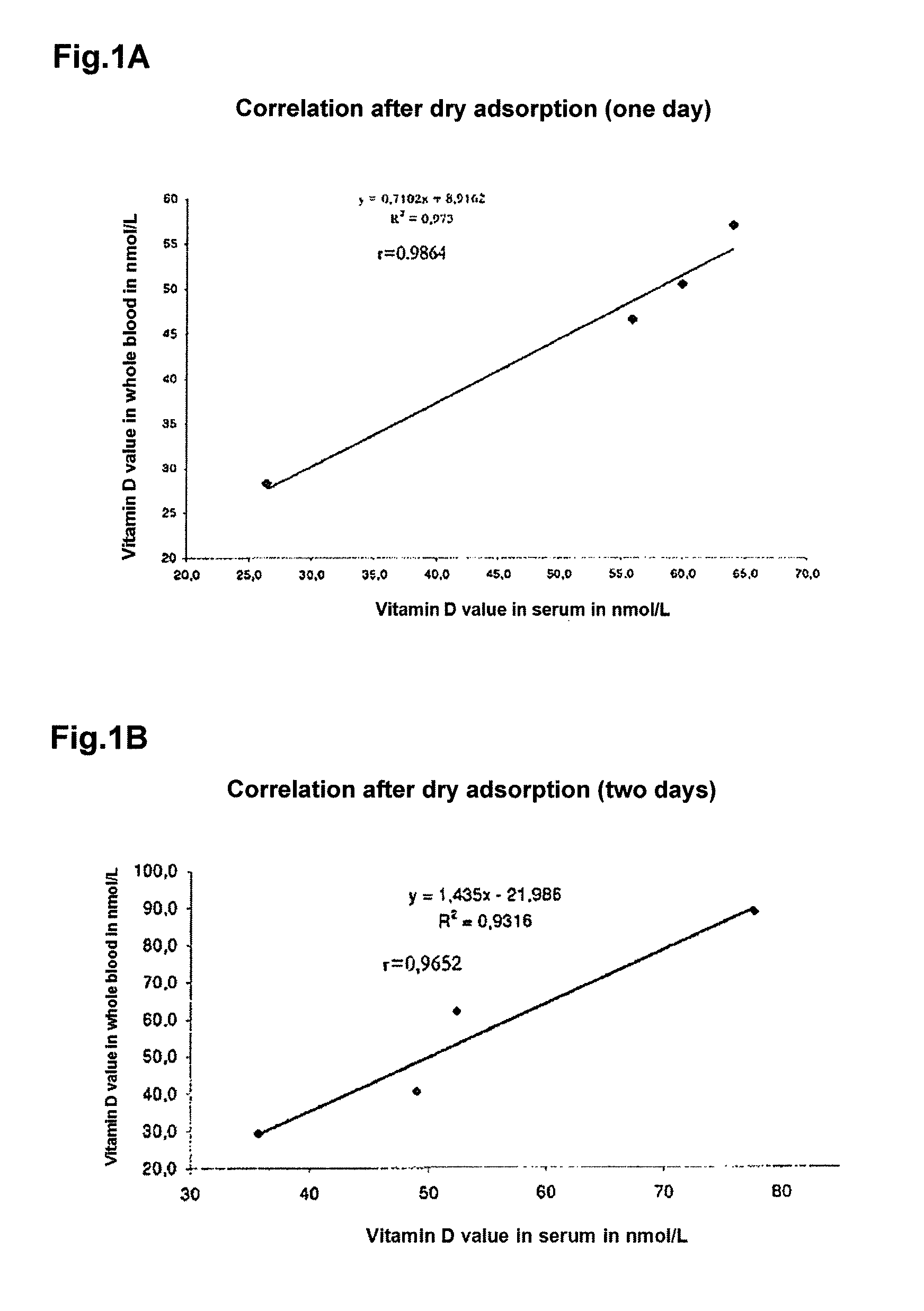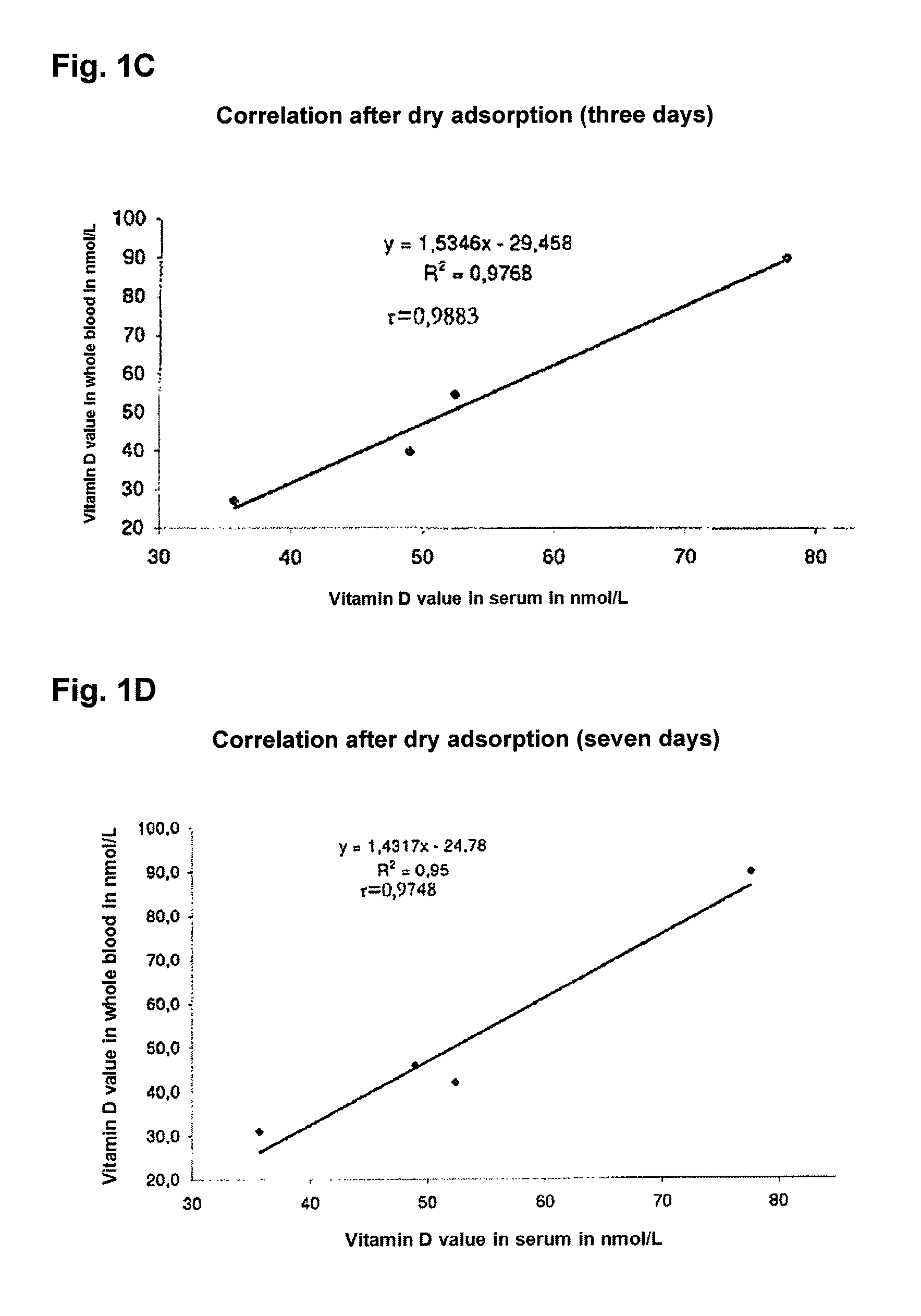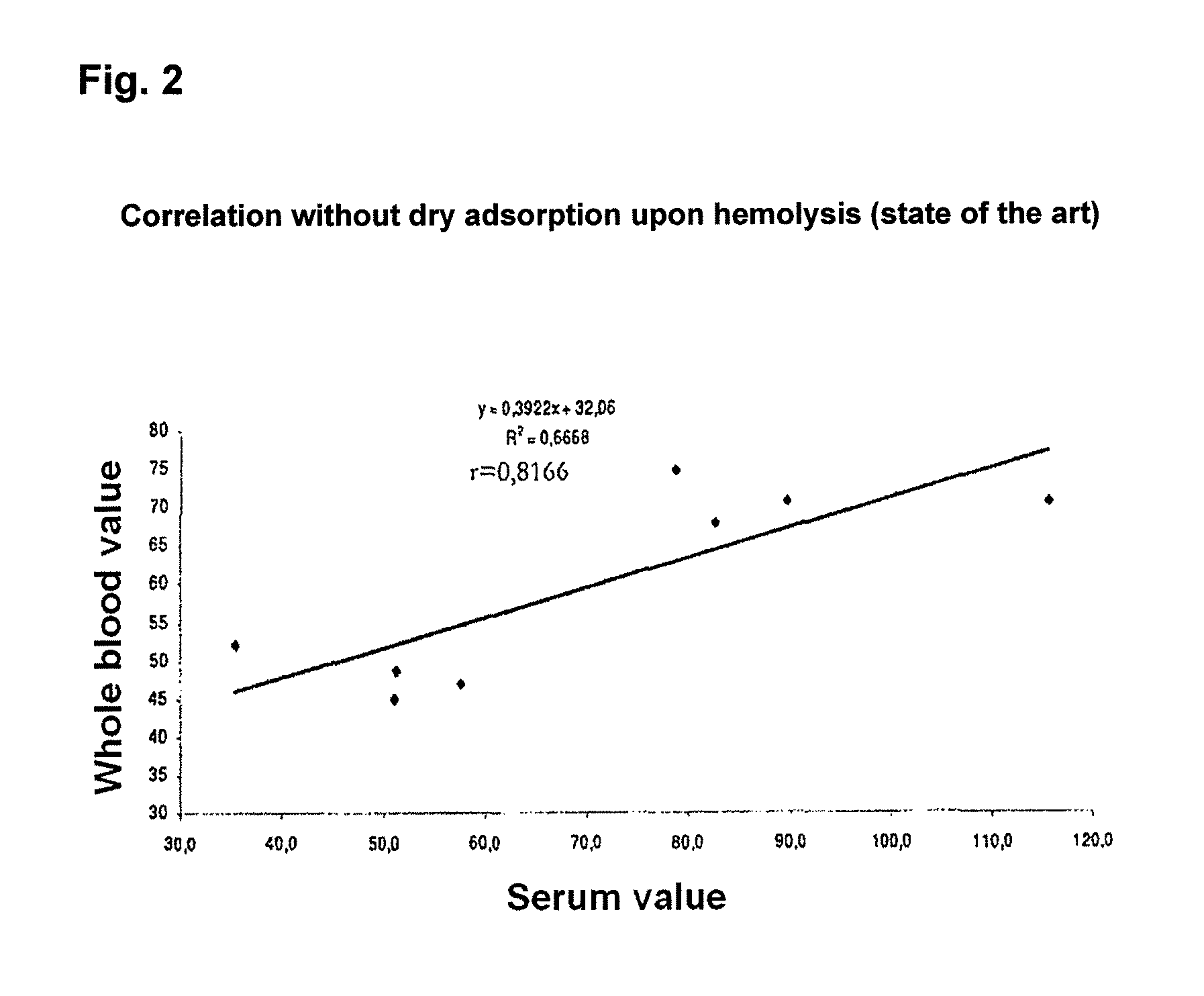Determination of vitamin D metabolites in dried blood
a technology of vitamin d metabolites and biological fluids, applied in the direction of biological testing, material testing goods, etc., can solve problems such as haemolysis interference, and achieve the effect of safe sample handling and convenient transportation of collected samples
- Summary
- Abstract
- Description
- Claims
- Application Information
AI Technical Summary
Benefits of technology
Problems solved by technology
Method used
Image
Examples
example 1
Determination of Vitamin D Status in Capillary Blood
(i) Pre-Analytics
[0040]Calibrated capillary tubes and bibulous adsorption material (chromatography-grade blotting filter paper with PVDF membrane from Millipore, Billerica, Mass., USA) were provided and transferred thereon a 50 μL sample of blood from finger. The first drop of interstitial fluid after tapping was discarded. The vitamin D status in circulation was used for comparison. 50 μL of capillary blood was transferred and dried on 200 μL of hydrophobic membrane material. The membrane material was encased in an envelope and thus protected from light, contact and moisture. The blood sample could be stored in this way without any change or transported at ambient temperature for 7 days and longer.
[0041]The membrane material with the dried blood spot was transferred into a 1.5 mL Eppendorf tube. This was followed by (i) 10 minute solubilising of the dried blood with 100 μL dissolving buffer (50 mM Na / K phosphate buffer, pH 8.0, 10...
example 2
Reproducibility and Stability of the Dried Blood Sample
[0047]When dried blood samples are sent by mail or courier to the laboratory, the samples must yield the same values for the vitamin D metabolites in the respective test system after different time periods. The shipping of laboratory samples by mail or courier usually lasts no longer than seven days since the doctor and patient expect, no later than that, an early result.
[0048]50 μL-dried blood samples on 200 μL of membrane material, each prepared in accordance with example 1, were stored at ambient temperature for different periods of time (1 to 7 days). The whole dried blood samples on the membrane material were then each dissolved in 100 μL dissolving buffer as described in example 1 and treated at 37° C. for 30 minutes with a methanol-isopropanol mixture having a permittivity of 25. This resulted in a complete release of the vitamin D metabolites from the membrane while the plasma and serum proteins became denatured, notably...
example 4
Comparison of 25(OH)D Determinations in Capillary Blood with EDTA-Whole Blood and Serum as Well as Between Whole Blood and Serum
[0054]50 μL of capillary blood from the fingertip as well as EDTA-whole blood and serum from the elbow of 25 subjects were each transferred onto 200 μL of sorption material using a capillary and, after drying on the sorption material, determined on the following day as in example 1, paragraph (ii). The results have been summarized in FIGS. 3A-C. FIG. 1A confirms that the 25(OH)D concentration in the peripheral blood vessels of the fingertip is no different to the measured concentration in EDTA-whole blood from elbow. Capillary blood results in no other values with respect to 25(OH)D than for EDTA-whole blood. The same essentially applies to the 25(OH)D determination in serum while the obtaining of serum results produces a change in volume which needs to be accounted for. Through the obtaining of serum, a “dilution effect” is obtained which has a direct impa...
PUM
| Property | Measurement | Unit |
|---|---|---|
| temperature | aaaaa | aaaaa |
| concentration | aaaaa | aaaaa |
| temperatures | aaaaa | aaaaa |
Abstract
Description
Claims
Application Information
 Login to View More
Login to View More - R&D
- Intellectual Property
- Life Sciences
- Materials
- Tech Scout
- Unparalleled Data Quality
- Higher Quality Content
- 60% Fewer Hallucinations
Browse by: Latest US Patents, China's latest patents, Technical Efficacy Thesaurus, Application Domain, Technology Topic, Popular Technical Reports.
© 2025 PatSnap. All rights reserved.Legal|Privacy policy|Modern Slavery Act Transparency Statement|Sitemap|About US| Contact US: help@patsnap.com



